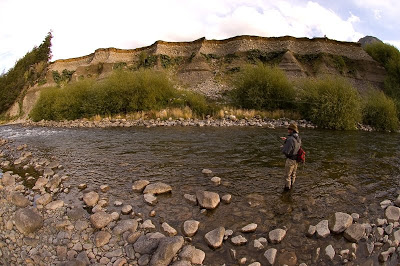
Today we start a series of posts about classic trout fishing tactics. In this series, we’re not talking about the salmon-part-eating rainbows of Western Alaska— we’re talking about the mainly-insect-eating critters of the Rockies and the Northeast and our ‘classic trout’ fishery in Southern Chile.
Much of our content in this series will in fact come directly from Chris Price, our manager at Chile West. The approaches that we use when we chase the rainbows, browns, and brookies of Southern Chile are of course applicable wherever these critters live, so whether the next outing for your 5 weight is on the Rio Pico in Chile or the Yakima River in Washington, have a read.
We’ll start with the dry stuff first and get some terminology out of the way so that we’re all on the same page when we cover the fun stuff like bug life, presentation and oh when to set the hook!
With that, some terminology.
When you see the term ‘run’ or ‘pool’, we’re talking about a section in the river between drops in elevation, usually between turns in the river. There are different names for sections of a run. The ‘head’ or ‘top’ of the run is the area where the river has and dropped down over rocks to create a ‘the riffle’. Just below the riffle, there is a deeper area where the current usually slows down; this we call ‘the bucket’. After the bucket, the river starts to shallow and widen. In this area, the water is generally smooth and flat, thus we call this area ‘the flat’. Below the flat, the river current will start to speed up before it pinches and drops down to create the next run; this is called ‘the tail’ or ‘tail out’.
There, that was easy. More to come!
Leave a Reply